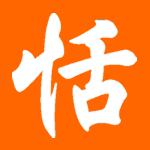Textbook is one of the basic tools for someone to learn a foreign language. When there are typos in a beginning-intermediate level Chinese textbook, usually students would assume they are “correct” and move on.
I wonder how the editors of “Ultimate Mandarin Chinese” would feel after reading this post, especially when the slogan on its cover says “The Most Complete and Up-to-Date Program Available”.
How about recheck your book with a dictionary?
人 = person
入 = enter


Also, the book says, "Here are two characters," and then proceeds to list three.
ReplyDeleteSo, it looks like they can't write OR count.
他 is the Chinese character for "he?" Wow, in Japanese that means something totally different, although the pronunciation is pretty much the same.
ReplyDeleteDan,
ReplyDeleteThe book "Ultimate Mandarin Chinese" does not provide all the meanings for each character and phrases.
他 has multiple meanings in Chinese as well, including "he", "other", and sometimes "foreign".
too bad mistake, because people who start studying chinese characters aren't aware how important these little differences between strokes are.
ReplyDeletereally gotta say that is tooooo funny... and I gotta also say that as I started to learn zhong wen those 2 characters were confusing as hell for me...
ReplyDeletebut this hanzismatter site is funny all around... tai ku le
thats a big boo boo, the last time i made that was in grade three...
ReplyDeleteI had a kanji learning learning book which said that "wicked" or "noisy" was three women (like onna) but I later found out that it was rape or something like that.
ReplyDeleteDan, 他 doesn't mean "he" in Chinese. It has the same meaning as in Japanese. 彼 in classical Japanese is also used in the same way, although it specifically means "he" in modern Japanese -as in "kare."
ReplyDeleteThat's just plain embarrassing
ReplyDeleteThat's rather sad, especially since it's a textbook. :/
ReplyDeleteanonymous: How is "ta" not "he" in Chinese? I'm a native Chinese speaker and as far as I know, the main two meanings are only "he" and "other/another".
sui is correct i beileve. The symbol for "Ta" without the female modifyer "nu" attached to it does mean he/she/it/other ect.
ReplyDeleteYikes, this makes me really nervous about my Japanese textbook... now I'll be checking and re-checking each kanji character with a dozen different sources. If you can't trust a textbook, what can you trust? Yikes.
ReplyDeleteI bought the book in 2001 and it doesn't have that mistake.
ReplyDeleteEven if it did, it's still a good book. The recordings are very useful as well.
Anyway, it doesn't teach enough characters for that to be a big point of the book. If you're going to criticize it, that should be the criticism: Not enough hanzi. But as for speaking, it's great.